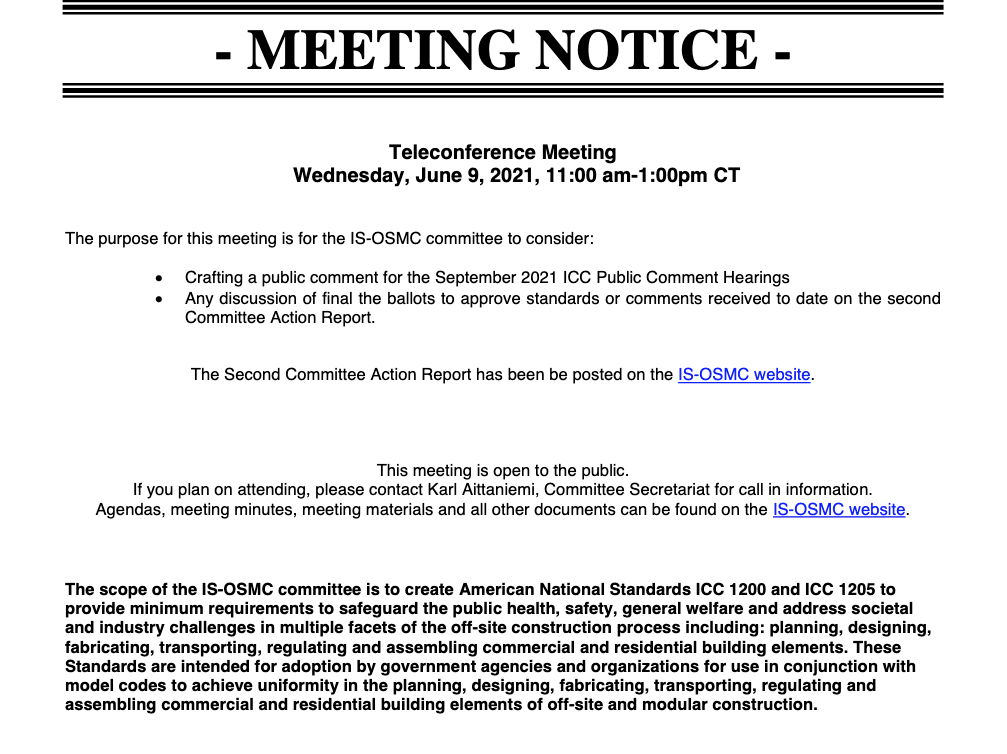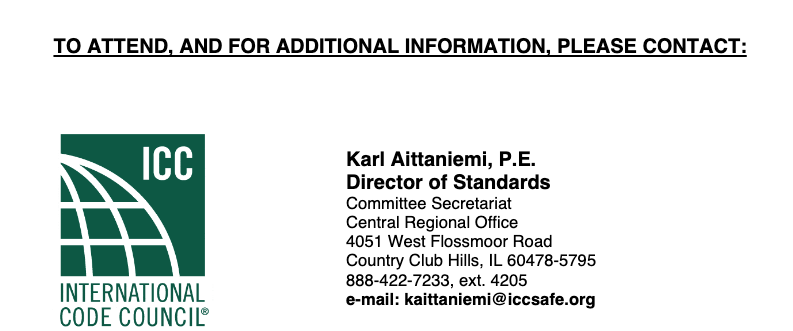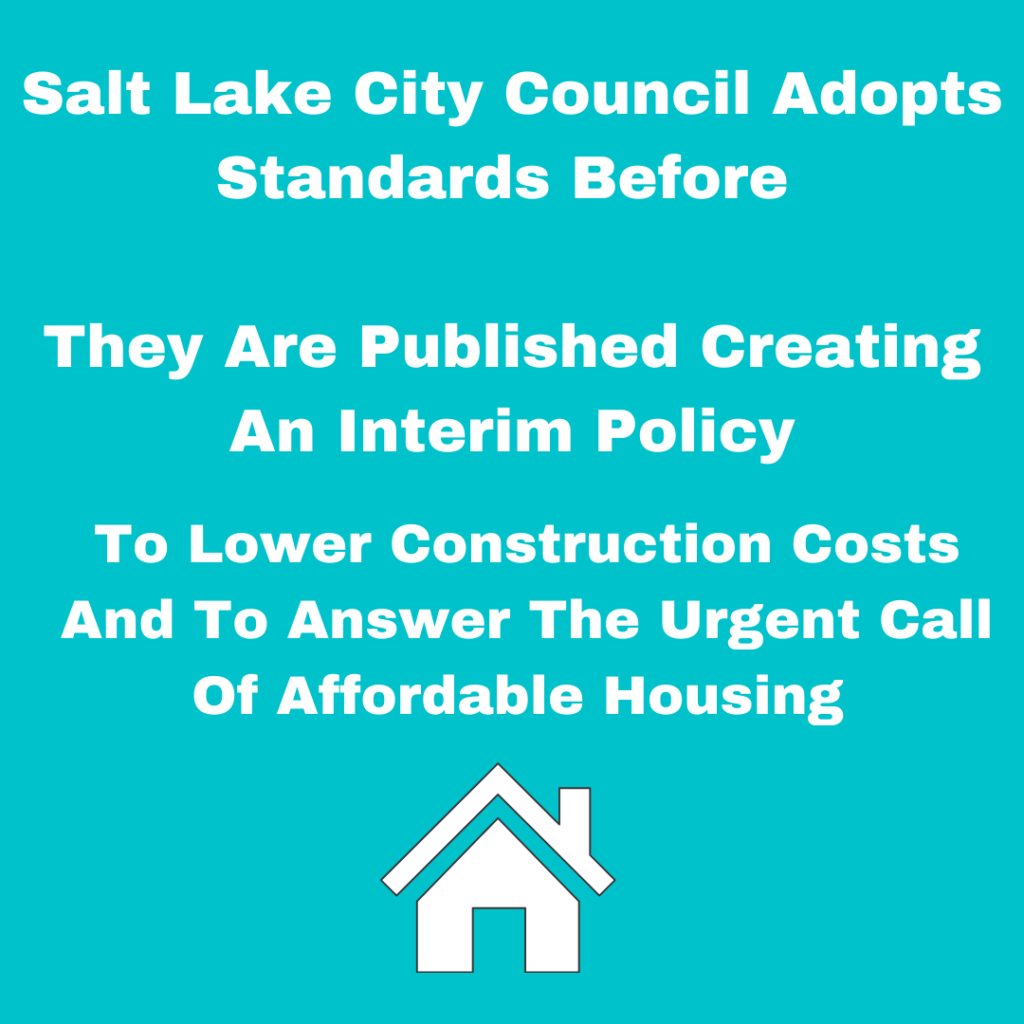City Council Creates An Interim Policy Before Standards Are Published
The International Code Council and the Modular Building Institute (MBI) applaud the Salt Lake City Council for its recent vote to adopt the new standards that are being developed to capture best practices for the effective use of off-site construction: ICC/MBI Standard 1200: Standard for Off-Site Construction: Planning, Design, Fabrication, and Assembly and ICC/MBI Standard 1205: Standard for Off-Site Construction: Inspection and Regulatory Compliance. The new standards provide minimum requirements for off-site and modular construction to safeguard public health, safety, and general welfare, and address the challenges posed by the need for local inspection and regulatory compliance.
The Code Council and MBI recognized the challenges many communities face in delivering affordable housing and the impact of off-site construction to address those needs. Off-site construction can also support jurisdictions achieving their goals of sustainability and jobsite safety. The Code Council and MBI initiated the development of these standards to help communities and the industry more readily capture the benefits of off-site construction while also assuring local building codes and safety are maintained.
Salt Lake City is the first jurisdiction in the country to adopt this standard and their City leaders should be commended for their vision,” said MBI Executive Director Tom Hardiman. “This standard ensures the City has another resource in its toolbox to address their housing and building infrastructure needs.”
“The lack of affordable housing is a crisis facing cities all over the country,” said Amy Fowler, the Salt Lake City Council Chair. “This would allow the city to include another stock of housing that can be quick, affordable, and attainable. It gives more flexibility in the construction process for modular buildings and helps remove one of the barriers to building tiny homes.”
CC/MBI Standard 1200 and 1205 are set to be finalized in mid-2021. To view the second public review draft, click here.
The International Code Council develops model building codes, including the International Building Code and International Residential Code, which serve as the basis for Utah’s construction codes. The Code Council also provides communities with solutions supporting implementation of those codes and other community safety, sustainability and resilience policies. The Modular Building Institute is the international non-profit trade association representing modular construction.
Salt Lake City Answered The Call To Affordable Housing
This step that Salt Lake City has taken to address the lowering of construction cost and to answer the urgent call of affordable housing should be applauded and the rest of the country should follow.
Introduction In February of 2019 the International Code Council (ICC) and the Modular Building Institute (MBI) initiated a joint project to write standards for the planning, design, fabrication, assembly, inspection and regulatory compliance of off–site and modular construction.
A standard development committee was created, and the first meeting of that committee was in July of 2019. The scope of this standard is to provide minimum requirements to safeguard the public health, safety, general welfare and address societal and industry challenges for the inspection and regulatory compliance of off–site and modular construction. Off–site construction techniques continue to gain favor among contractors as a departure from conventional construction processes. The off–site industry has evolved from are–locatable modular manufacturing sector into more of a building delivery sector. In the simplest of terms, off–site (or modular) construction entails the planning, design, fabrication and assembly of building elements at a location other than the location where they were fabricated. Large components of a structure can be assembled in a factory–like setting and transported to the building site for final assembly. Subsequently, the finished construction is required to comply with the model building code adopted by the local authority having jurisdiction. Compliance.
Standard for Off–Site Construction: Planning, Design, Fabrication, and Assembly
International Code Council(Committee approved5/18/21)TWENTIETHCOMMITTEE MEETING MINUTESOFF–SITE AND MODULAR CONSTRUCTIONCOMMITTEE (IS–OSMC)
The twentiethmeeting of the ICC Off–Site and Modular ConstructionCommittee (IS–OSMC) was convened on April 28, 2021tocontinuethe process of developingthe ICC 1200and ICC 1205standards.The teleconference meeting was conducted via Webex.
Discussion of code change proposal G102–21
a.Editing the standard verbiage to address the code committee’s concerns, namely,–Where adopted, Tiny Homes shall comply with App Q, IRC–Eliminating tiny home terminology within the text.
ICC/MBIStandard for Off-Site Construction: Planning, Design, Fabrication and Assembly
Lorem ipsum dolor sit amet, consectetur adipiscing elit. Ut elit tellus, luctus nec ullamcorper mattis, pulvinar dapibus leo.
This is exciting to see a standard adopted before it is even published to address affordable housing. We are exploring an initiative to write new global standards for tiny houses with ASTM and it is heartwarming to see a jurisdiction use this method.
Next ICC Off-Site Construction Modular Committee: Open To The Public
The twenty-second public meeting notice is posted below for June 9, 2021 at noon ET.
The balloting period for committee members to approve the final drafts of the standards had begun with a deadline to return ballots on June 28, 2021.




My idea for emergency shelter design uses the most simple and lightest construction concepts in a simple modular construction technique ever conceived.
It is basically a bedroom bicycle trailer which can be seen on facebook
The portable house for the homeless
It is an insulated foam box with inner walls of thin plywood built on a deck with bike wheels at the rear and attached to the seat tube of a bicycle. The trailer weighs 40 lbs empty , uses body heat to run internal systems and weeping windows for eliminating atmospheric moisture produced by humans. It is fairly simple to build and can be towed nearly anywhere a bicycle can go.
What it is designed to do is get the homeless off the ground and help keep them cleaner and provide shelter and warmth at no actual cost once completed.
The basic design can be built in a few days. The box itself can be used in as little as a few hours.
It is 8 feet long, 5 feet high from deck to ceiling and 4 feet wide.the trailer parts are under the plywood deck.the inside can be floored with foam rubber or plastic to insulate the floor and produces an automatic mattress to sleep on. The plans are on facebook. I wrote and illustrated this as a gift for humanity. I built and lived in these types of devices for many years. Look this little book up. Its worth much to those who can build with hand tools.